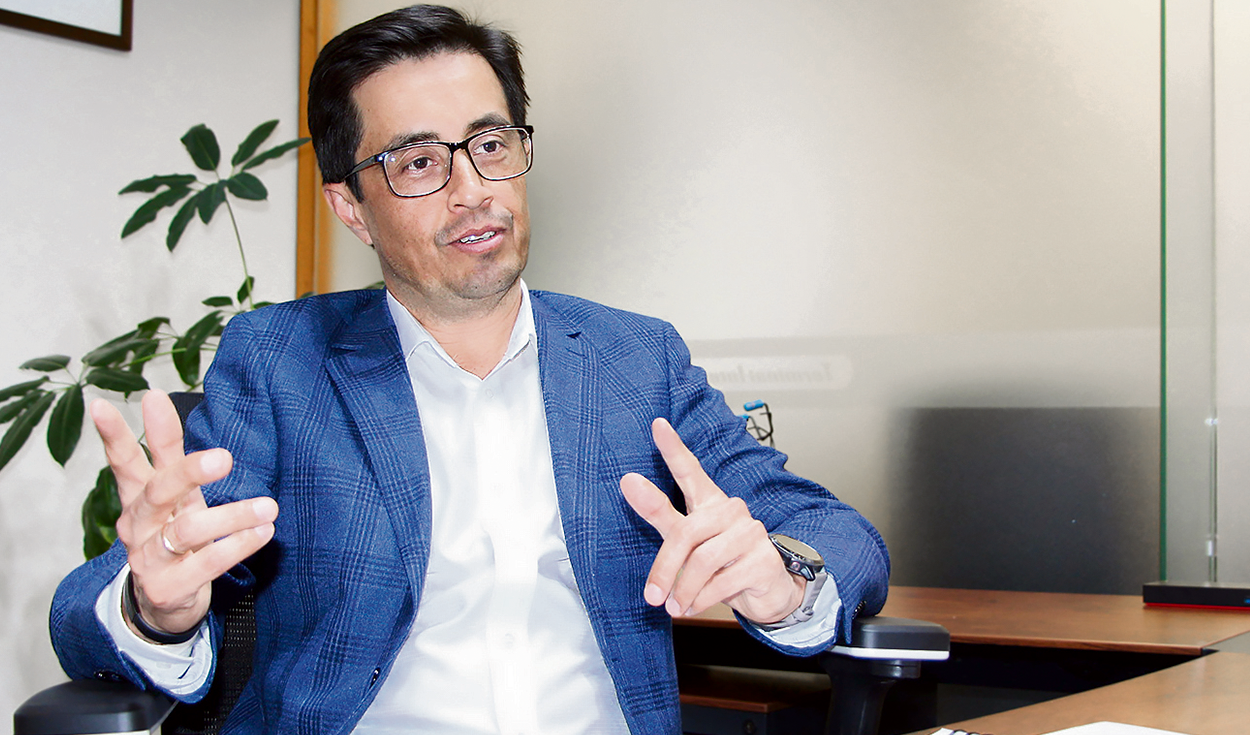
Tisur will request the extension of its concession contract in the port of Matarani. Under this premise, Mauricio Núñez explains that the Romero Group company is negotiating an exclusive warehouse for Zafranal, waiting for a new cabotage law that allows them to interact commercially with the port of Chancay.
—They have become the largest public copper shipping service in the world.
—There are 24 years in which more than 10 times what we initially projected has been invested: US$1.2 billion today in port infrastructure that has led us to go from serving one million tons to the 7.4 expected this year, mainly mining cargo. What corresponds in the following years is to continue accompanying the growth of the industries in the region.
—It is understandable, because they concentrate the mining load from the south.
—With the exception of the ports of Southern and Quellaveco in Ilo, all the minerals in the south of the country (Cerro Verde, The Bambas and Antapaccay) leave through Matarani. Of all types of cargo, minerals account for between 70%-75% of the income we generate annually.
—And they are now negotiating a warehouse with Zafranal.
-In MataraniThree mines have their own warehouse and two more, some minor traders, use a system that we have for minerals, but public. In the case of Zafranal, they intend to develop an exclusive warehouse for copper.
—However, its concession ends in six years, and Zafranal is projected for 2028.
—That is a complexity that would have to be resolved.
—Do you maintain hope of being renewed?
—More than hope, an intention. We already have the merit, but it depends on good understanding with the Government.
—What would the process be like?
—In our case, we have the option of requesting an extension. After Tisur, the Port Law was created, which provides for 30 years that ports have to develop. It is the scheme, the current legal framework. We would have some opportunity, while the rest of the facilities do not have it for now.
—And they are still fighting to be Bolivia’s transit port?
—In Bolivia we have the expectation of continuing to capture volume in the coming years. This year we expect 400,000 tons, but potentially we could reach 800,000. A breaking point would be if we achieve 2 or 3 container shipping lines. We could immediately capture more.
—And why is the Bolivian cargo going to Arica today?
The only thing that Arica has that Matarani does not have are lines that handle regular itinerary containers. That does not depend on the infrastructure.
—The lack of lines also affects Peruvians.
—The lines go to Arica through Bolivia, and in Peru they go to Callao because it concentrates 80% of the economy. The power that shipping lines have to determine where the cargo goes is what ends up setting the tone. If they had the intention of changing to Matarani, it would definitely be much more efficient for Bolivia, since we would not only carry their cargo, but also that of the south, which today has to go to Callao by land.
—Do you see a threat in the Chancay Megaport?
—Any port infrastructure that is developed in the country adds up. We don’t see it as a competition, quite the opposite. Because if it is going to be established as a hub for all ships from Asia to arrive there and then be distributed to the entire coast of the South Pacific, we want to be on one of those ships that feed the route.
—Chancay and the Cabotage Law would favor them, then.
-Anyway. I see to Chancay as a potential partner to the extent that conditions are met for it to be established as a hub and that laws, such as cabotage, are in place appropriately so that any ship passing through here can drop off or pick up cargo in Matarani and not go through land up there.
—And why doesn’t the same happen with Corío?
—At this time there is still a deficit in port infrastructure, which is why Chancay appears and the APM Terminals and DP World projects are expanded. But we cannot talk about a project of more than US$2 billion in the middle of nowhere. Ports will exist where there is enough cargo to develop it, not the other way around. Not even taking 100% of Matarani’s cargo could pay, which is why it has been declared unviable three or four times.
—How will the Matarani operation close in 2023?
-Before the pandemic We managed to move 20,000 TEU. Today we are at almost 12,000, since the emergency took away one of the two lines we had. In terms of general revenue, according to our latest report, we billed US$112 million in 2022, which is basically the average of the last 3 or 4 years. But this year we hope to surpass it.
Source: Larepublica
Alia is a professional author and journalist, working at 247 news agency. She writes on various topics from economy news to general interest pieces, providing readers with relevant and informative content. With years of experience, she brings a unique perspective and in-depth analysis to her work.











